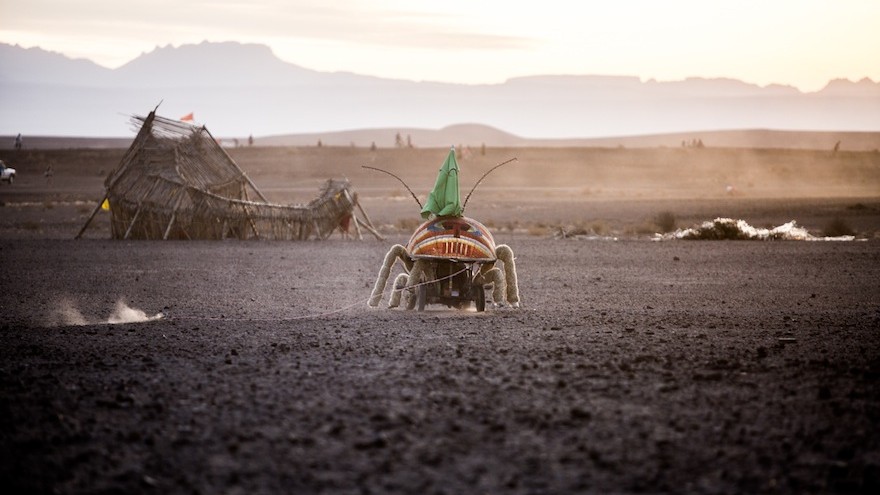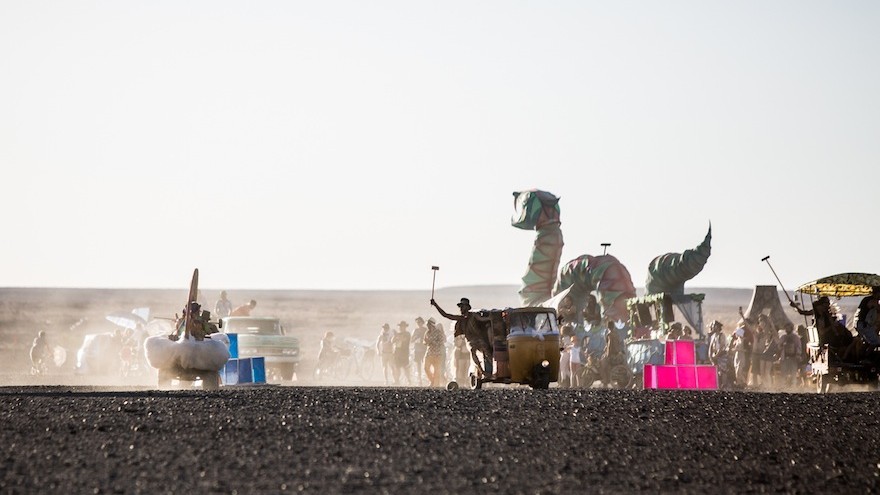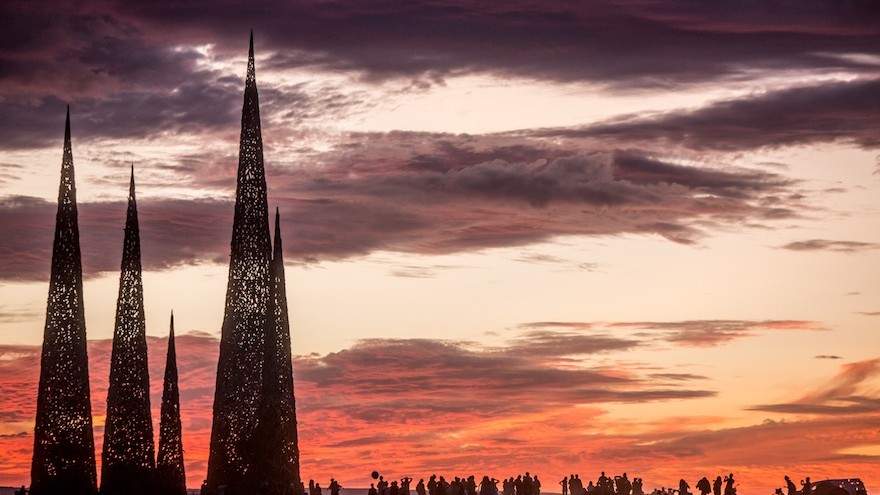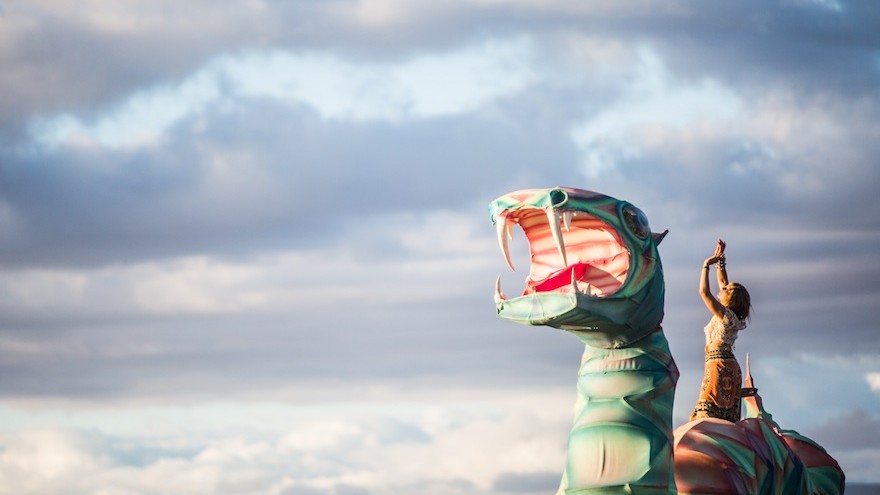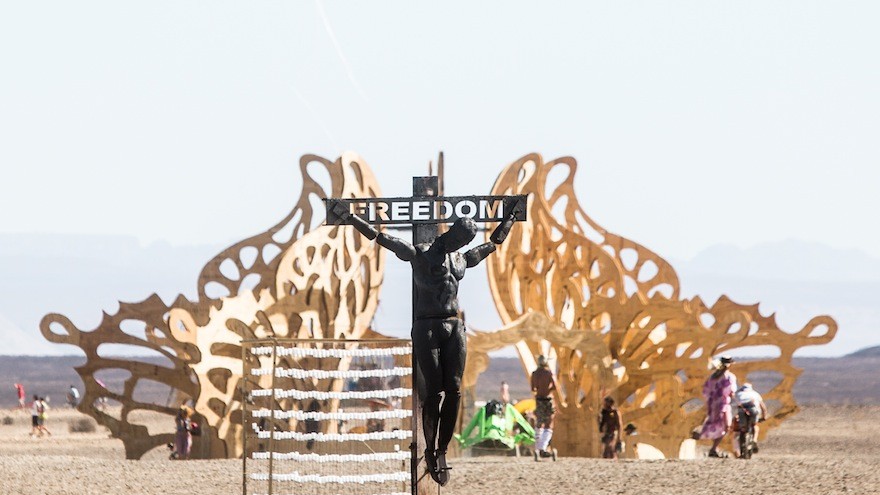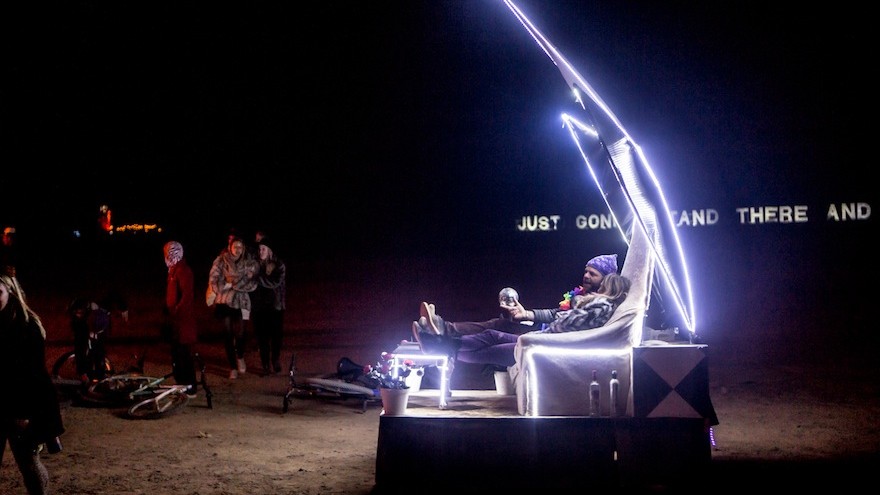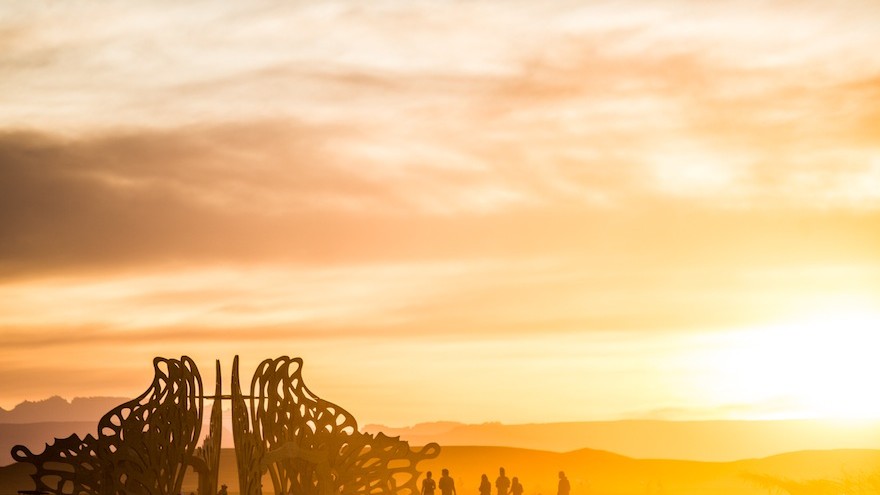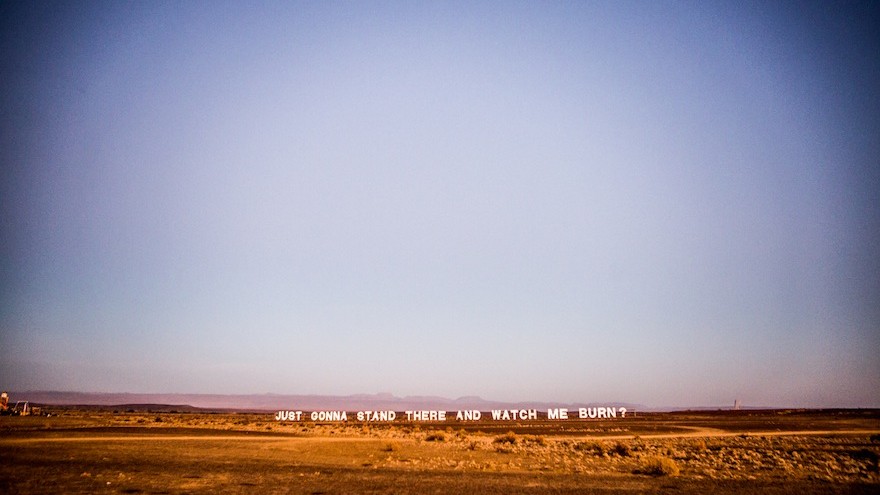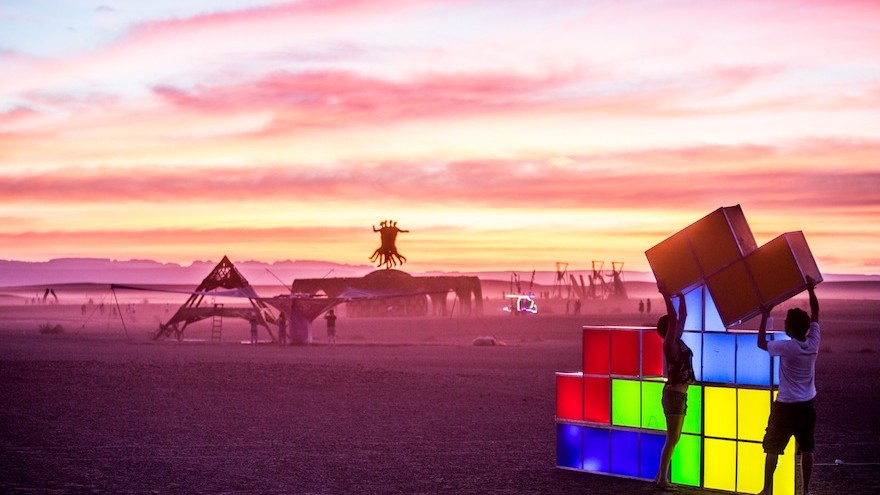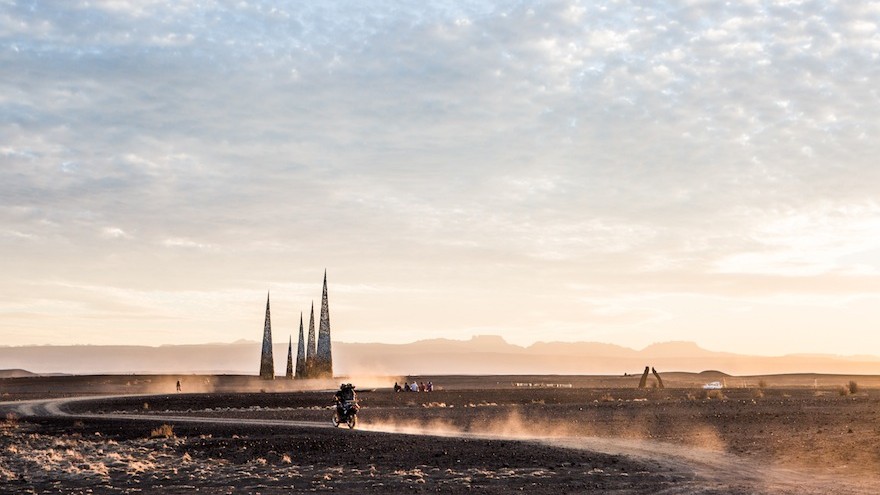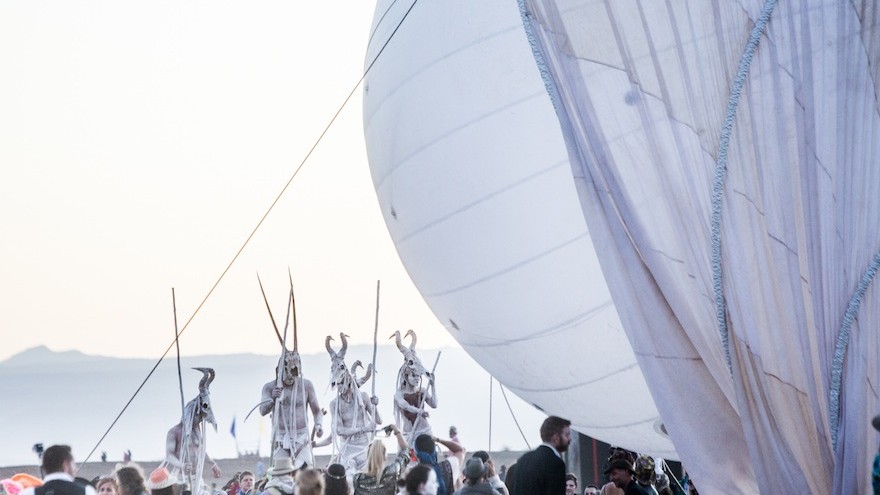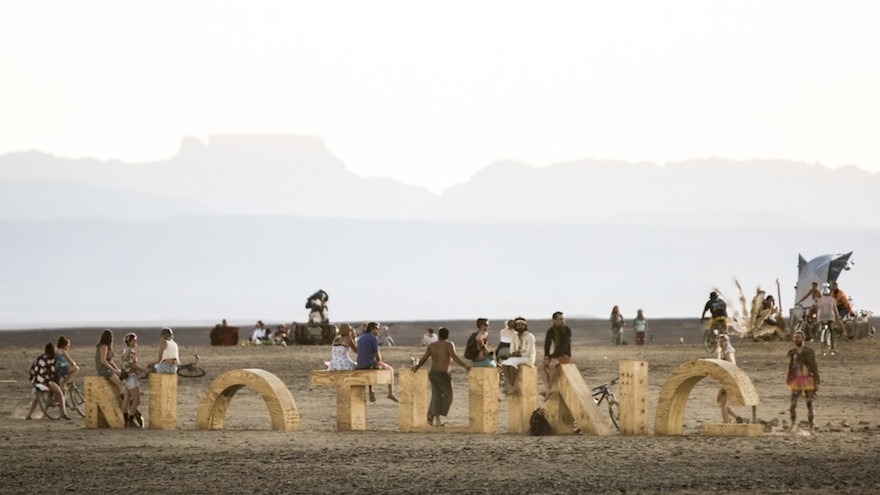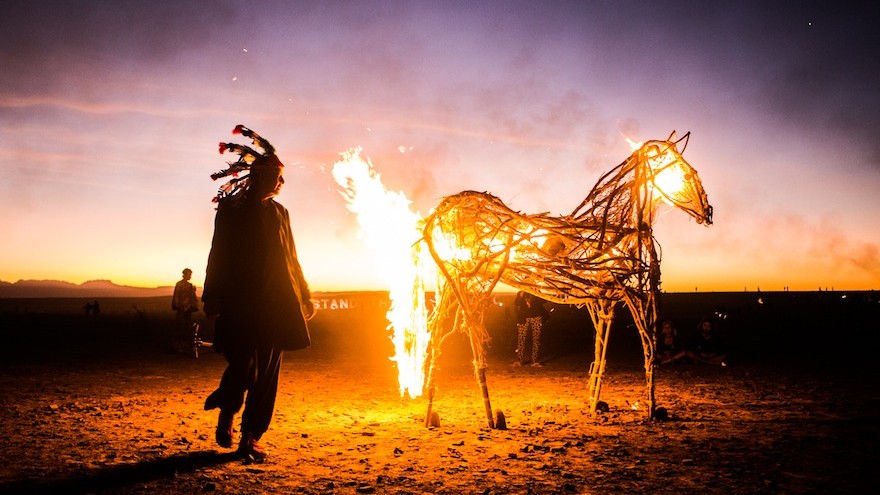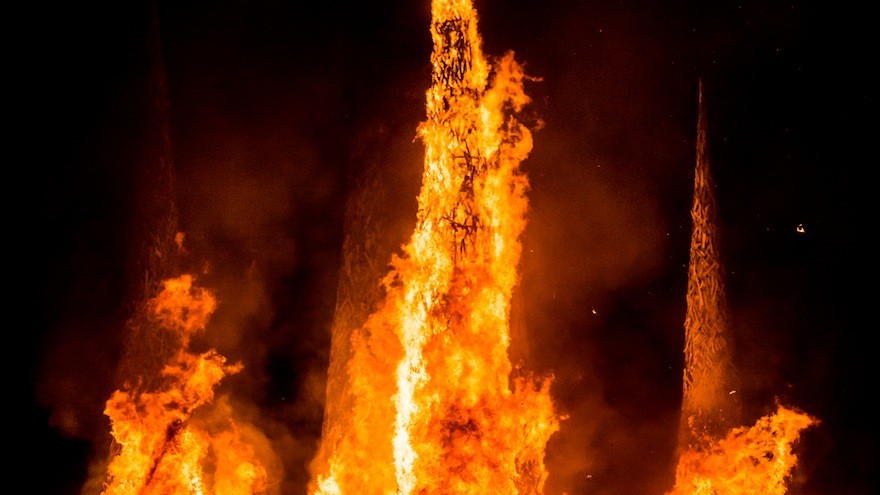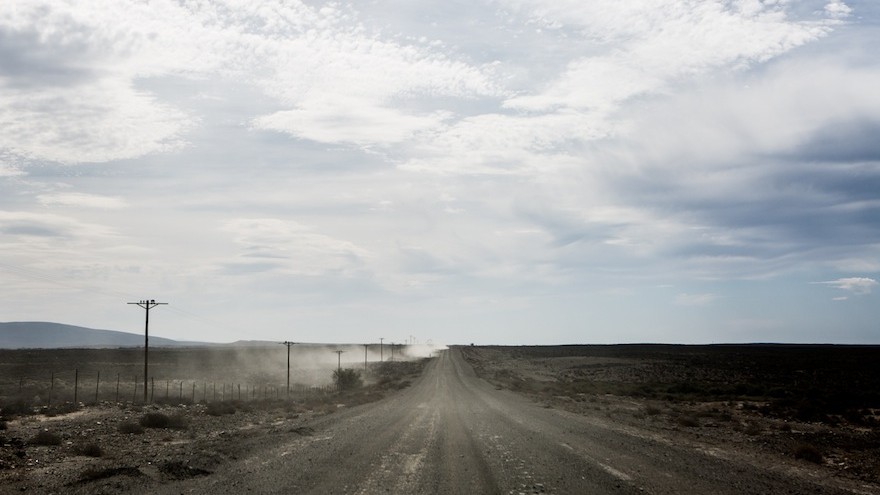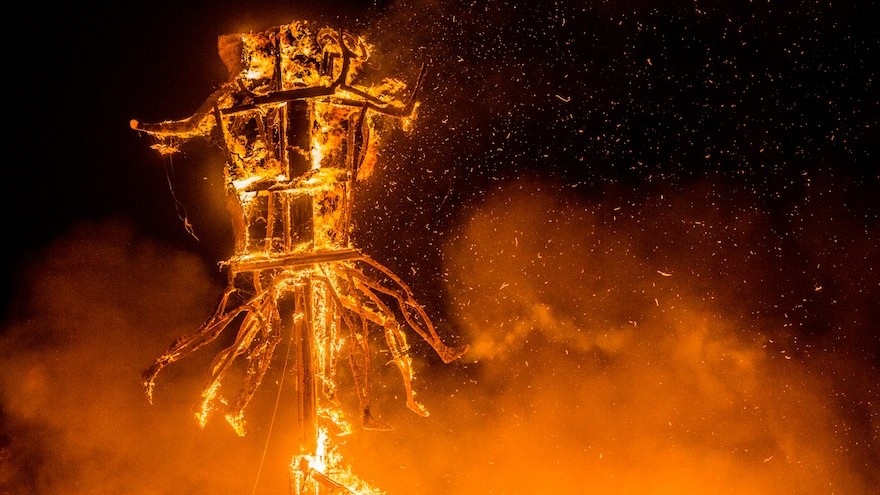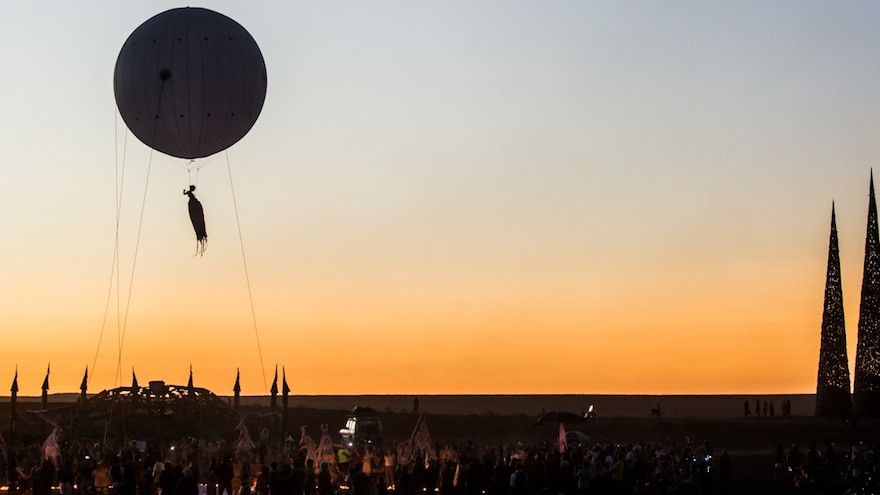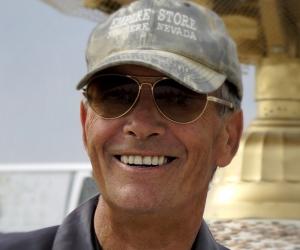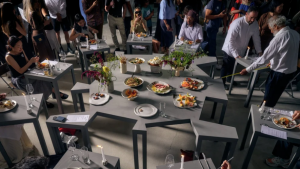From the Series
Almost 10 000 people made the annual pilgrimage to the temporary municipality known as Tankwa Town in the semi-desert Karoo for Africa’s regional Burning Man event, Afrikaburn, in the last week of April. In the words of Larry Harvey, widely credited as the founder of Burning Man, they came for the art and stayed for the community.
A five-hour drive from Cape Town, and even further from South Africa’s other large cities, ending on a 180km stretch of tyre-shredding dirt road with no phone signal, the journey alone is a notable challenge. But the challenge is part of the festival’s identity: one of the 11 guiding principles of the festival is self-reliance.
With blazing hot days, bitter cold nights and the threat of destructive sandstorms, the only antidote to the extreme hostility of the environment is the affability and generosity of its participants. The festival fosters a culture of gifting, interactive art, creativity and play.
Amongst its other principles are radical participation and decommodification: ice is the only thing for sale in Tankwa Town.
Huge wooden art works are constructed every year, most of which are burnt down on the latter nights of the festival week, a reminder that beauty is not something that can be owned and that all things are transient.
For those who weren’t there to see them, here are photographs of some of the notable pieces and moments, taken by Jonx Pillemer.
Some of the artworks have a political slant: the six towers of Subterrafuge were a statement of protest against fracking in the Karoo. Others are merely playful.
Mutant vehicles, licensed art cars, are the only motorised transport in the temporary town, which has its own newspaper, post office and street signs.
The theme of this year’s Afrikaburn, “The Gift”, is taken from a book by Lewis Hyde, who argues that art is a gift, not a commodity, and that societies where gift-giving prevails are more interconnected.
All images courtesy of Jonx Pillemer.

